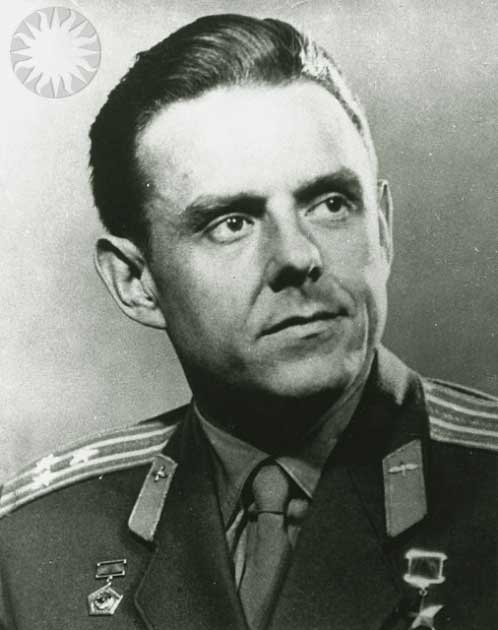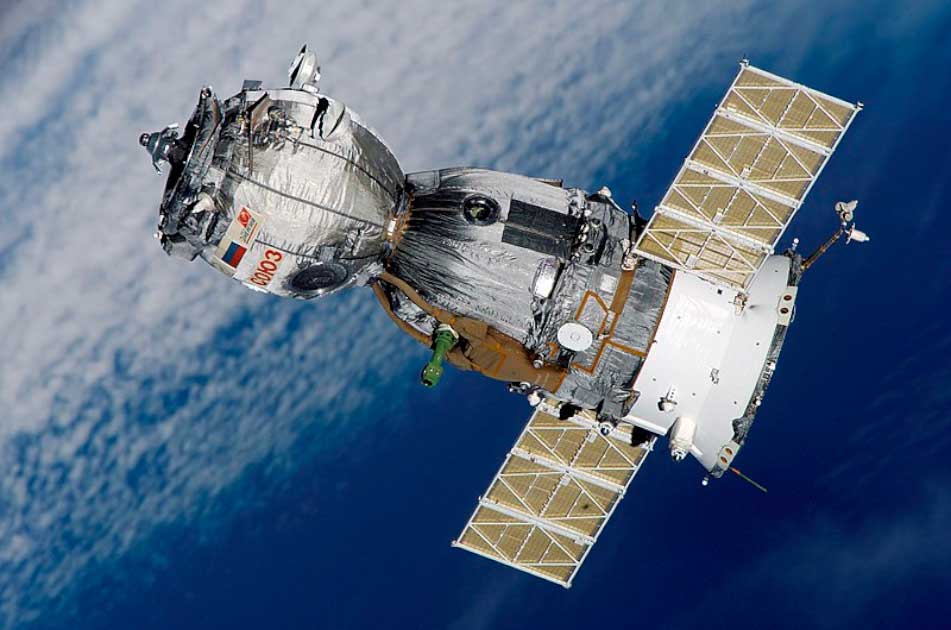It is an exciting time to be alive for anyone who is interested in space exploration right now. After decades of stagnation, the space race is back on. Inspired by advances made by private firms like SpaceX, Virgin Galactic, and Blue Origin, man’s gaze is once again pointed to the stars.
The fact is though that none of the strides being made today would be possible if it weren’t for the hard work and sacrifices of those that came before us. Today the west is well aware of the story of the first Lunar Landing, made by Apollo 11 in 1969.
Few people in such audiences are familiar with the Soviet side of the story however, or how close they came to beating the United States in the space race. This means the stories of brave men like Vladimir Komarov have largely gone untold.
For Vladimir Komarov was, as far as we know, the first human to die in space flight.
Who was Vladimir Komarov?
A sad fact of history is that it is usually written by the victors. This means that while many of us are familiar with the events of the U.S space program leading up to Apollo 11, few people are familiar with the Soviet side of the story.
This has been compounded by the fact that after losing the space race the Soviet government did its best to pretend that it had never even taken part: it was the best way to save face. The whole space program was swept under the rug, it had never been a strategic goal for the Russians.
The result has been that the sacrifices made by men like Vladimir Komarov have not been well remembered or documented. This is troubling because, despite the fact they came so close to beating the US, the Soviet approach to health and safety during the race was a deadly one.

Vladimir Komarov was born in Moscow in 1927. While not born into poverty, Komarov came from a low-income household where his father worked various low poorly paid jobs to keep the family finances afloat.
From a young age, Komarov showed a natural skill in mathematics. In 1942, at the age of 15, he joined the “1st Moscow Special Air Force School”. He graduated in 1945 ready to serve as a pilot, but just in time to miss WW2.
Komarov served as a pilot in the Soviet Air Force until 1959 when he was promoted to the position of senior engineer-lieutenant. Shortly after receiving the promotion, he achieved his dream of becoming a test pilot.
He was invited to join the selection process to travel to space as a Soviet cosmonaut with roughly 3,000 other pilots. He did well during this process and thanks to his extensive experience was one of the twenty top candidates. He was placed into “Air Force Group One”.
Things began to go wrong for him however when he failed to be placed in the top six of his group. This was down to the fact he did not meet the program’s age, weight, or height restrictions. At 32 years old Komarov was 5 years over the preferred age for the program.
Things got even worse in 1960 when just before training began Komarov was forced to have an operation that set his training back six months. He should have been eliminated there and then, but thanks to his experience and engineering qualifications he was allowed to stay in the program.
Throughout his training, Komarov managed to prove himself again and again. As other cosmonauts failed exercises and dropped out due to medical issues Komarov worked his way back up through the rankings. By 1964, only 7 trainees were still eligible for the first spaceflight, Voskhod 1. Komarov was named the commander of Voskhod 1’s backup crew.
On the 11th of October 1964, Komarov became one of the first Soviets to enter space. The space flight lasted for just over 24 hours and was a complete success. He and his crew were welcomed home as heroes and Komarov was promoted to the rank of general.
Sadly his next space flight would not be so successful.
The Death of Vladimir Komarov
In 1967 Komarov was chosen to command the Soyuz 1 space flight. Cracks were beginning to show in the Soviet space program by this point. Komarov and his backup, Yuri Gagarin, were working 14 hours days trying to get their craft mission worthy.
Upon achieving space flight on the 23rd of April 1967, Komarov reported a whole host of problems with the Soyuz 1 craft. Its solar panels were failing to fully deploy, leaving the ship with insufficient power. They were also blocking some of his vital navigation equipment, making it next to impossible for him to orient the ship correctly.
The second part of the mission, in which Soyuz 2 would have been launched, was quietly canceled and the mission was cut short. Komarov was ordered to try and re-orient the craft but found he could not.
- The TP-82 Pistol: Why Did the Soviets Take Guns to Space?
- Charles Jevington and the Outer Planet Rings
Ultimately he managed to re-enter Earth’s atmosphere successfully but was let down one last time by his craft. Its main parachute did not deploy as it should have and Komarov and the Soyuz 1 were sent hurtling into the ground. Komarov became the first human to die in space flight at 6.24 am on 24th April 1967.
How Safe was the Soviet Space Program?
Not very. Komarov may be the most well-known fatality of the Soviet Space program but he was not the first or last. On March 23rd, 1961 Valentin Bondarenko became the first official casualty when he died during training. A fire broke out in a low-pressure, high-oxygen training environment, and Valentin was engulfed in flames.

In 1971 three more Russian cosmonauts were killed when their capsule depressurized as they were preparing for re-entry. These cosmonauts are the only people in history to have actually died in space, rather than within earth’s atmosphere.
On April 5th, 1971, a capsule carrying two cosmonauts to the Salyut 4 space station malfunctioned. Their launch had to be aborted and the capsule ended up hitting a mountain, luckily their parachute snagged on a tree before they could slide off the edge of a cliff. The two survived but were severely injured. One never flew again.
The worst of all occurred on March 18th, 1980. A Vostok rocket was being fueled on its launchpad when it exploded. The explosion took the lives of 48 people. It is possible that even more Russians died as a result of the space program, but it can be hard to pierce the veil of soviet secrecy.
Due to the secretive nature of the Soviet space program, we’ll likely never know exactly how many people lost their lives trying to beat the Americans to the moon. What we do know is that there were quite a few.
We can safely conclude that the Soviet space program wasn’t very safe to be a part of. Reasons for this are numerous but likely boil down to how the program was run. Corruption in the Soviet Union was rife and its space agency was full of high ranking officials trying to line their pockets while also trying to make a name for themselves.
Sadly today those who lost their lives in the program are barely remembered, but their sacrifices must not be forgotten. Many of the technological advances and luxuries we enjoy today hail back to the brave men and women who took part in both the American and Soviet space programs.
Top Image: 1964 Soviet stamp commemorating the spaceflight program. Vladimir Komarov, on the left, would die three years later. Source: Post of the Soviet Union / Public Domain.